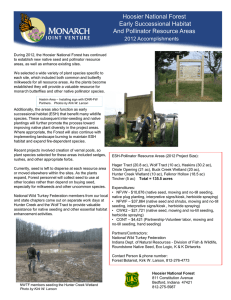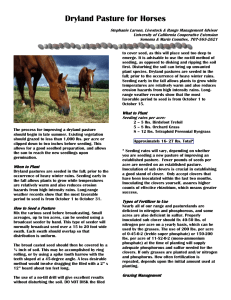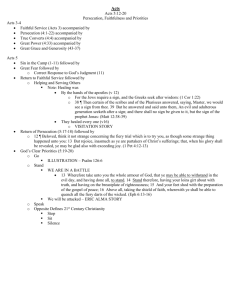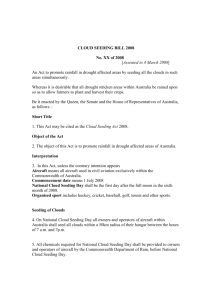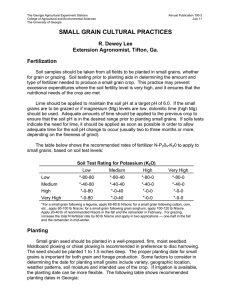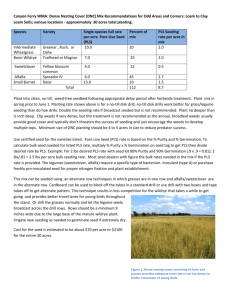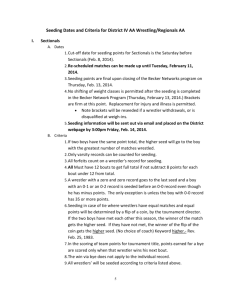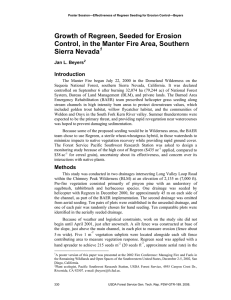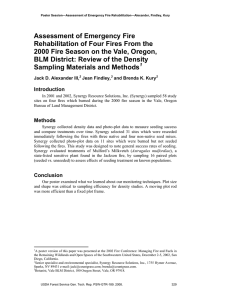Management of Annual and Italian Ryegrasses
advertisement
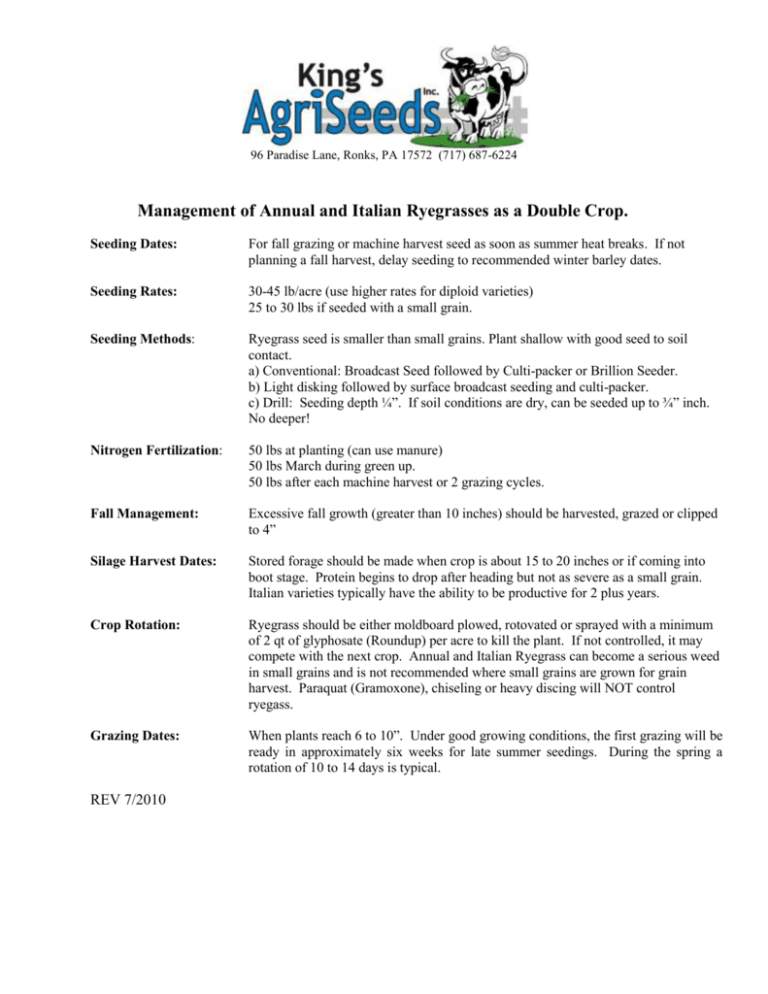
96 Paradise Lane, Ronks, PA 17572 (717) 687-6224 Management of Annual and Italian Ryegrasses as a Double Crop. Seeding Dates: For fall grazing or machine harvest seed as soon as summer heat breaks. If not planning a fall harvest, delay seeding to recommended winter barley dates. Seeding Rates: 30-45 lb/acre (use higher rates for diploid varieties) 25 to 30 lbs if seeded with a small grain. Seeding Methods: Ryegrass seed is smaller than small grains. Plant shallow with good seed to soil contact. a) Conventional: Broadcast Seed followed by Culti-packer or Brillion Seeder. b) Light disking followed by surface broadcast seeding and culti-packer. c) Drill: Seeding depth ¼”. If soil conditions are dry, can be seeded up to ¾” inch. No deeper! Nitrogen Fertilization: 50 lbs at planting (can use manure) 50 lbs March during green up. 50 lbs after each machine harvest or 2 grazing cycles. Fall Management: Excessive fall growth (greater than 10 inches) should be harvested, grazed or clipped to 4” Silage Harvest Dates: Stored forage should be made when crop is about 15 to 20 inches or if coming into boot stage. Protein begins to drop after heading but not as severe as a small grain. Italian varieties typically have the ability to be productive for 2 plus years. Crop Rotation: Ryegrass should be either moldboard plowed, rotovated or sprayed with a minimum of 2 qt of glyphosate (Roundup) per acre to kill the plant. If not controlled, it may compete with the next crop. Annual and Italian Ryegrass can become a serious weed in small grains and is not recommended where small grains are grown for grain harvest. Paraquat (Gramoxone), chiseling or heavy discing will NOT control ryegass. Grazing Dates: When plants reach 6 to 10”. Under good growing conditions, the first grazing will be ready in approximately six weeks for late summer seedings. During the spring a rotation of 10 to 14 days is typical. REV 7/2010


